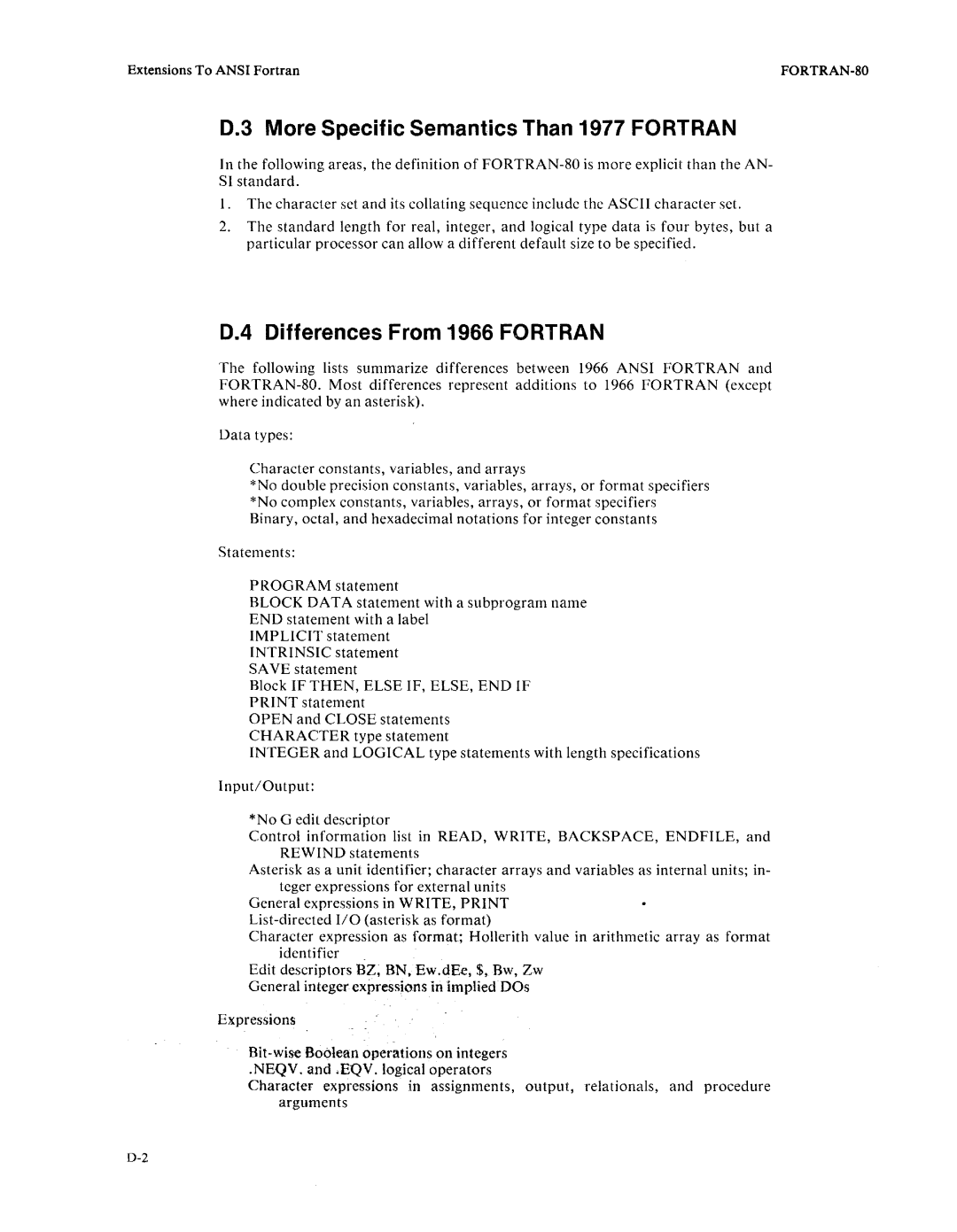
Extensions To ANSI Fortran |
|
0.3 More Specific Semantics Than 1977 FORTRAN
In the following areas, the definition of
1.The character set and its collating sequence include the ASCII character set.
2.The standard length for real, integer, and logical type data is four bytes, but a particular processor can allow a different default size to be specified.
0.4 Differences From 1966 FORTRAN
The following lists summarize differences between 1966 ANSI FORTRAN and
Data types:
Character constants, variables, and arrays
*No double precision constants, variables, arrays, or format specifiers *No complex constants, variables, arrays, or format specifiers Binary, octal, and hexadecimal notations for integer constants
Statements:
PROGRAM statement
BLOCK DATA statement with a subprogram name END statement with a label
IMPLICIT statement INTRINSIC statement SAVE statement
Block IF THEN, ELSE IF, ELSE, END IF PRINT statement
OPEN and CLOSE statements CHARACTER type statement
INTEGER and LOGICAL type statements with length specifications
Input/Output:
*No G edit descriptor
Control information list in READ, WRITE, BACKSPACE, ENDFILE, and REWIND statements
Asterisk as a unit identifier; character arrays and variables as internal units; in- teger expressions for external units
General expressions in WRITE, PRINT
Character expression as format; Hollerith value in arithmetic array as format identifier
Edit descriptors BZ; BN, Ew.dEc j $, Bw, Zw General integer expressions in implied DOs
Expressions
.NEQV. and ,EQV.logical operators
Character expressions in assignments, output, relationals, and procedure arguments
